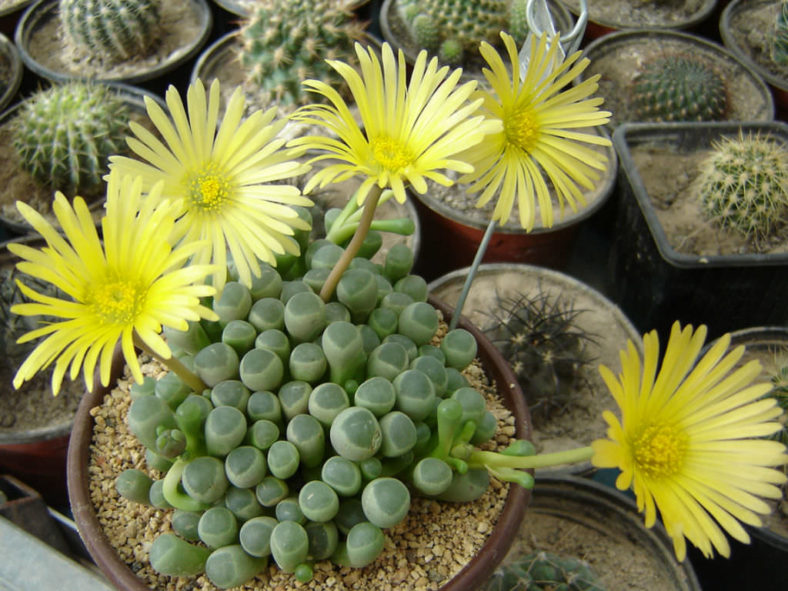Fenestraria is a possibly monotypic genus of succulent plants, commonly known as Baby Toes or Window Plants, found in the winter rainfall region of southeastern Namibia and South Africa. These dwarf plants form mats or small clumps in sandy soil. Their leaves are flat-topped and windowed, with generally only the uppermost portion exposed in the wild. They possess thick, fleshy roots.
The currently recognized species in this genus is Fenestraria rhopalophylla. Each plant leaf has a translucent window-like area at its rounded tip. The genus name refers to these window-like structures.
Because they are dwarf plants, Fenestrarias are best grown in pots by themselves or in a mixed succulent bowl.
Growing Conditions and General Care
Fenestrarias prefer sandy, well-draining soil. Mix equal parts of potting soil with pumice or perlite. Water these plants sparingly to avoid root rot and split leaves. They need to be kept somewhat dry in the summer.
Grow Fenestrarias outdoors in full to part sun. Indoors, move them to a spot with bright indirect light. Water thoroughly when the soil is dry to the touch. Fenestrarias are somewhat frost-tolerant, but protection is advisable to prevent scarring.

Propagating
Fenestrarias are usually propagated by seed but sometimes by division. Like many succulents, they produce offsets as the clusters of leaves mature and spread. These are easy to divide from the main clump and readily produce another plant. The seeds from the plant germinate sporadically and grow extremely slowly. Faster Fenestraria is achieved by dividing the side growth.
Pests and Diseases
Good drainage is essential to prevent root rot. Otherwise, this genus is pretty oblivious to pests and diseases.
Links
- Back to genus Fenestraria
- Succupedia: Browse succulents by Scientific Name, Common Name, Genus, Family, USDA Hardiness Zone, Origin, or cacti by Genus